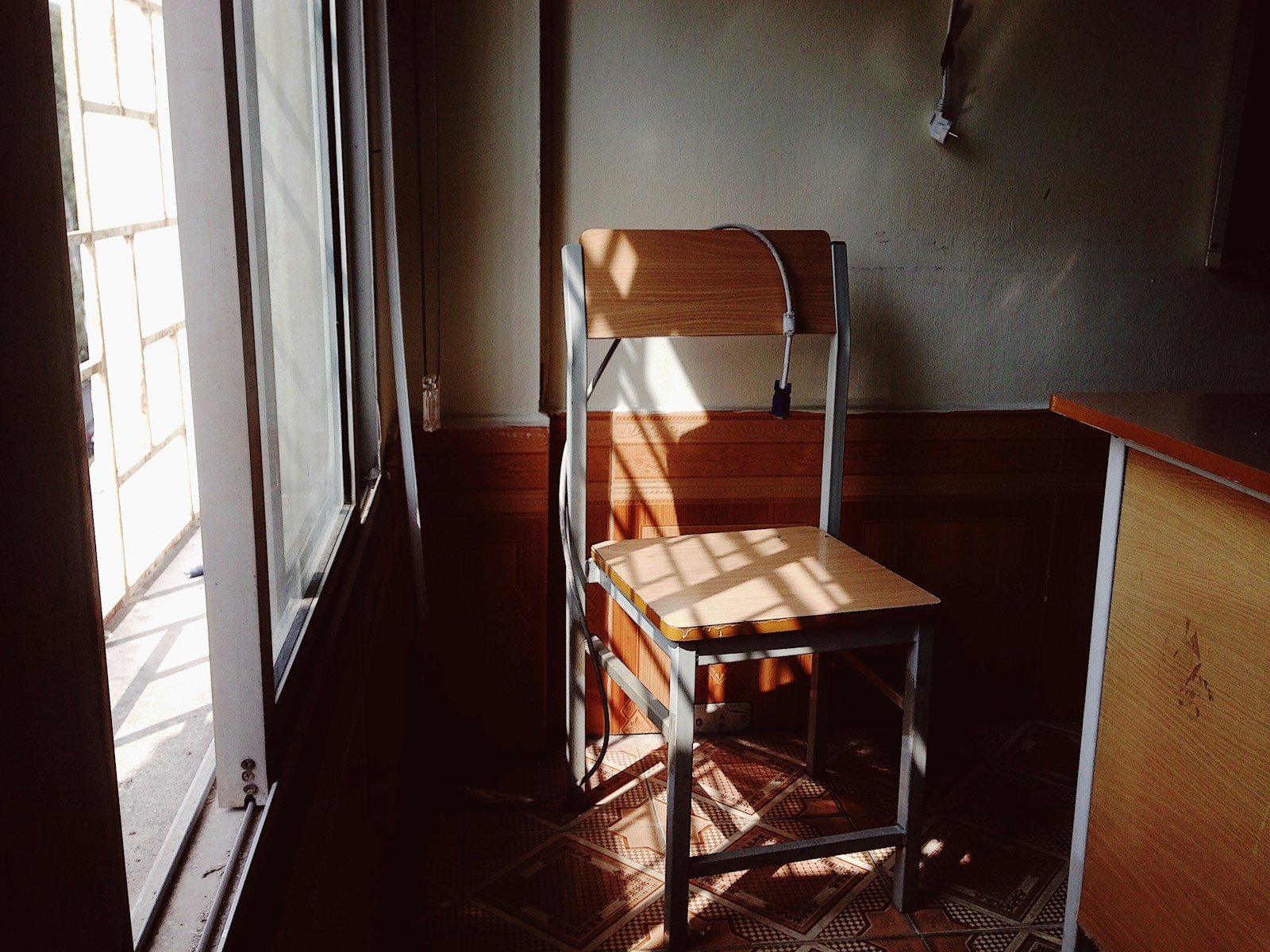
silla

chair
'Silla' is the Spanish noun for chair. Chairs are pieces of furniture designed to accommodate one person, typically having four legs and a back.
Example sentences using: silla
Esta es mi silla.

This is my chair.
This sentence is conveying ownership of the chair to the person speaking, also the possession is shown by using the Spanish possessive pronoun 'mi','my' in.= English.
Estoy sentado en mi silla.

I am sitting on my chair.
This sentence describes person's current state or action - denotes that the person is sitting on their chair at the certain moment.
Ella tiene una silla nueva.

She has a new chair.
The sentence conveys that she has received, bought or in some way acquired a new chair. The gender specific pronoun of 'Ella', 'she' in English is used indicating the chair belongs to a female.
Él moverá la silla.

He will move the chair.
Talks about the future action of moving the chair. The word 'moverá' is a future tense Spanish verb based on the verb 'mover', means to move.
Háblame colocando la silla aquí

Talk to me placing the chair here.
Shows a compound action by placing a chair at a certain place and then engage in conversation. 'Háblame' is an example of a command in Spanish where the listener is being asked to do something.
Compré la silla ayer.

I bought the chair yesterday.
Determines a purchase of a chair made yesterday using past verb 'Compré' which way to 'bought' in English.
La silla de mamá es azul.

Mom's chair is blue.
Sign retailer,Basic phrase demonstrating possession and describes the chair as belonging to the mother in the family, also describes chair color which is ' blue'.
La silla está vacía.

The chair is empty.
Denotes that no one is perfectly installed. The English word empty stands for the absence of anyone or anything. Spanish equivalent 'vacia'n Examples is how to Greek/spanaging emotion-Javadoc and their reference REF610 Tranlate menneskeresses a one ana>
Voy a pintar la silla.

I'll paint the chair
The phrase gives an insight into speaker's forthcoming action of painting a chair. The usage 'voy a' illustrates upcoming/immediate future activities.
Necesito una nueva silla.

I need a new chair.
A simple sentence expressing the need/demand of a new chair using 'Necesito' (I need), where singular first person is expressing the need.
¿Dónde está la silla?

Where is the chair?
This phrase is used when you are looking for a chair. '¿Dónde está' means 'where is' in Spanish.
La silla es roja.

The chair is red.
This is a simple phrase talking about the color of a chair. 'La' is the feminine form of 'the' in Spanish, 'silla' means chair, and 'es' is the third person singular of the verb 'ser' which means 'is'.
La silla es muy cómoda.

The chair is very comfortable.
This phrase is expressing an opinion about the comfort level of a chair. 'Muy' means 'very', and 'cómoda' means 'comfortable' in Spanish.
La silla está rota.

The chair is broken.
This phrase indicates that a chair is broken. 'Está' is a form of the verb 'estar' which signifies a temporary state.
Quiero comprar la silla.

I want to buy the chair.
The word 'quiero' translates to 'I want' and 'comprar' means 'to buy'. This phrase implies the speaker's intention to purchase a chair.
Voy a limpiar la silla.

I'm going to clean the chair.
Here, 'Voy a' is a phrase that expresses a future plan or intention, and 'limpiar' means 'to clean'.
Puedes mover la silla.

You can move the chair.
The phrase 'Puedes mover' translates to 'You can move'. This implies giving permission or suggesting moving the chair.
Esta es mi silla favorita.

This is my favorite chair.
'Esta es mi' translates to 'This is my' and 'favorita' means 'favorite'. It indicates the speaker's preference for a particular chair.
Deja la silla aquí.

Leave the chair here.
'Deja' means 'leave' and 'aquí' translates to 'here'. This is a command telling someone to leave a chair in a particular location.
La silla es para mi abuela.

The chair is for my grandmother.
'Para' is a preposition which means 'for' and 'mi abuela' translates to 'my grandmother'. This sentence suggests that the chair is meant for the speaker's grandmother.